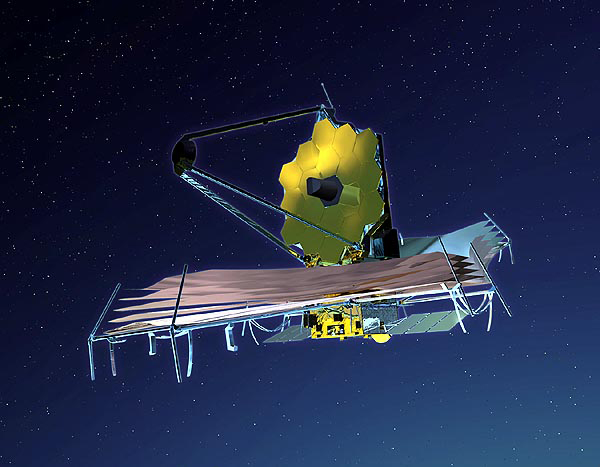Webb, if you are not familiar with NASA lore, was a bold leader rather than a bureaucrat tasked with perpetuating funding, and it was due to his leadership that NASA launched 75 missions into space, including putting a man on the Moon.
The telescope named after him is instead very much a product of modern NASA - its benefit and time to completion were overestimated and its funding requirement underestimated. The belief in much of modern Big Science is once you get initial funding it becomes too expensive to not complete so issuing a reasonable number for appropriations comes before honesty. And then ethical researchers and engineers are stuck holding the bag.
It isn't Republicans who launched the latest volley of concern about JWST but new Chairman Hal Rogers is a Republican, so the partisan shills in science writing will make it a "Republicans hate science" issue but the report was ordered by Senator Barbara Mikulski, an outraged Maryland Democrat, last year.
People who circle the wagons around every bit of funding (see Shrimp On A Treadmill) will say you can't ever cut funding. They worry that if America cancels this successor to the Hubble we will lose 'leadership' in astronomy, the same way they claim we lost 'leadership' in physics by canceling the Superconducting SuperCollider, despite the fact that there was no indication it would even be completed today - or how it would have worked. It was a goal, not a specification for engineers.

Artist's conception of the James Webb Space Telescope. It has been delayed for almost as long as we have been here and now it is out to 2015 at the earliest. Credit: Canadian Space Agency
The Webb telescope has likewise been a black hole for funding. In James Webb Space Telescope delivers more bad news last year I noted that the budget was up to $6.5 billion and now an earliest completion date of 2015, though its original claim was it would be done by now.
Budgets are finite. Everyone knows this except partisans in science. The $1.5 billion that JWST now claims it needs in order to not waste the billions already spent could fund 5,000 basic science research projects in space science (see While Webb Bleeds, Space Science Hemorrhages) and $1.5 billion is just the latest cost overrun, not the total budget that may come up as more engineering concerns arise - so rather than circle the wagons around this project because it is science and people want to avoid a slippery slope, scientists can do a world of good holding each other accountable and making it less necessary for politicians to do so.
The idea behind the Webb Telescope is a great one - continuing the work started by Hubble and Webb will be able to see light from about 250-400 million years after the Big Bang whereas the Hubble Space Telescope sees back to only 800 million years. It sounds esoteric to the public but there are fascinating things we can learn. However, science has to have a cost attached to a value, basic research or not. This is what killed the SSC.
Those who compare the Webb Telescope to losing the SSC should take note - canceling the SSC made the much more reasonable, both in cost and engineering, Large Hadron Collider (LHC) a reality. Did it give Europe some ethereal, unquantifiable 'leadership' in physics? No, lots of projects are still done in the US and Japan but the task of finding the Higgs boson, which may not even exist, and its press has fallen to Europe. America still contributes and its knowledge will benefit all scientists, just like the Tevatron in the US has helped all scientists worldwide.
It may be that canceling the JWST will be the wake-up call NASA has needed for a long time. The Obama administration already pulled the plug on the Constellation project and it may be time to do two things that are painful in the short term but essential for space science in the long term:
First, fund smaller projects that don't have big engineering issues and are achievable.
Second, make missions time-based, get back to 'acceptable risk' and allow NASA to shuck off the modern 'zero defects' mentality and the tentacles of bureaucracy and regulatory constraints that infect much of government-funded science.
Creating bold missions where project managers use a 'joint confidence level' of 50% are not going to work in a time of budget concerns. Let's hope the science community takes this warning shot as a chance to get fundamental reform in how science is done.




Comments